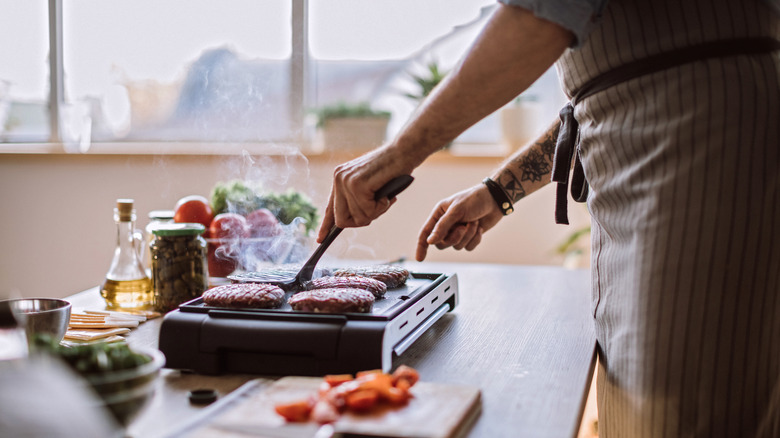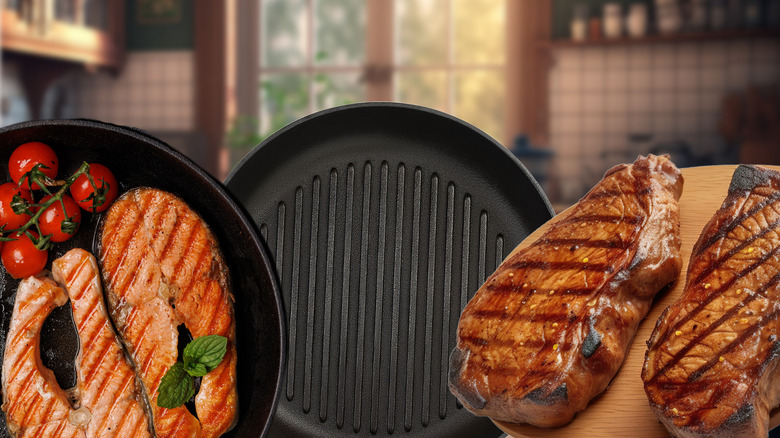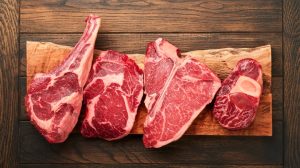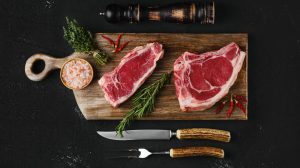When we think of grilling we tend to picture a standalone grill out in the backyard, but the art of the grill is more versatile than that. Grilling indoors is a great option for the cold winter months or for those of us living in a city apartment with no access to personal outdoor space. But grilling indoors isn’t the same thing as grilling outside so we reached out to McCormick spice brand partner Max Greb (aka Max the Meat Guy) to ask what he thought the best cuts of meat were for indoor grilling.
“Generally speaking,” Greb told us. “Smaller and more tender cuts are the best choices when cooking indoors. Great examples include steaks, pork chops, or even filets of fish.” You have to take the size of your cooking area into consideration and how much control you have over your cooking temperature. Outdoor grills are often quite wide and can handle a dozen burgers at once or more. That’s not the case with your indoor kitchen.
“A good grill pan will still allow you to develop flavorful grill marks,” Greb went on. “And cooking a ribeye to medium rare indoors can be done in under 15 minutes.” The best pan for grilling indoors has to be cast-iron cookware so if you plan on grilling indoors regularly, it’s worth it to invest in a good set. Getting a pan with ridges will also help produce those grill marks if that’s important to you.
Larger cuts of meat are best grilled outside

The decision-making process for grilling indoors essentially comes down to what your kitchen can handle. If you have high-tech indoor grilling equipment that allows you to smack down some baby back ribs in the comforts of your own home, that’s great. Your options are wide open. If you’re working with a small skillet and an electric stove, you’ll want to choose meats that are more manageable. A smaller cut of meat is going to be more forgiving of the temperature since the heat won’t take as long to reach the center of the cut. Any larger and you may end up with an overcooked exterior and an undercooked interior.
There are other things to consider when grilling indoors apart from what type of meat you plan on cooking. One major issue is avoiding smoking up your kitchen when grilling inside, which can also make your house smell like meat (that may or may not be a good thing depending on your taste).
The moral of the story is to avoid larger cuts of meat. “Larger less tender cuts like brisket, pork shoulders, and ribs really shine when cooking outdoors,” said Greb. “Cooking them low and slow on an outdoor smoker allows them to develop a smoky flavor, while the longer cooking time slowly tenderizes the meat.” You can use your oven as a smoker for these larger cuts if you like but for the stovetop, small cuts are the way to go.







